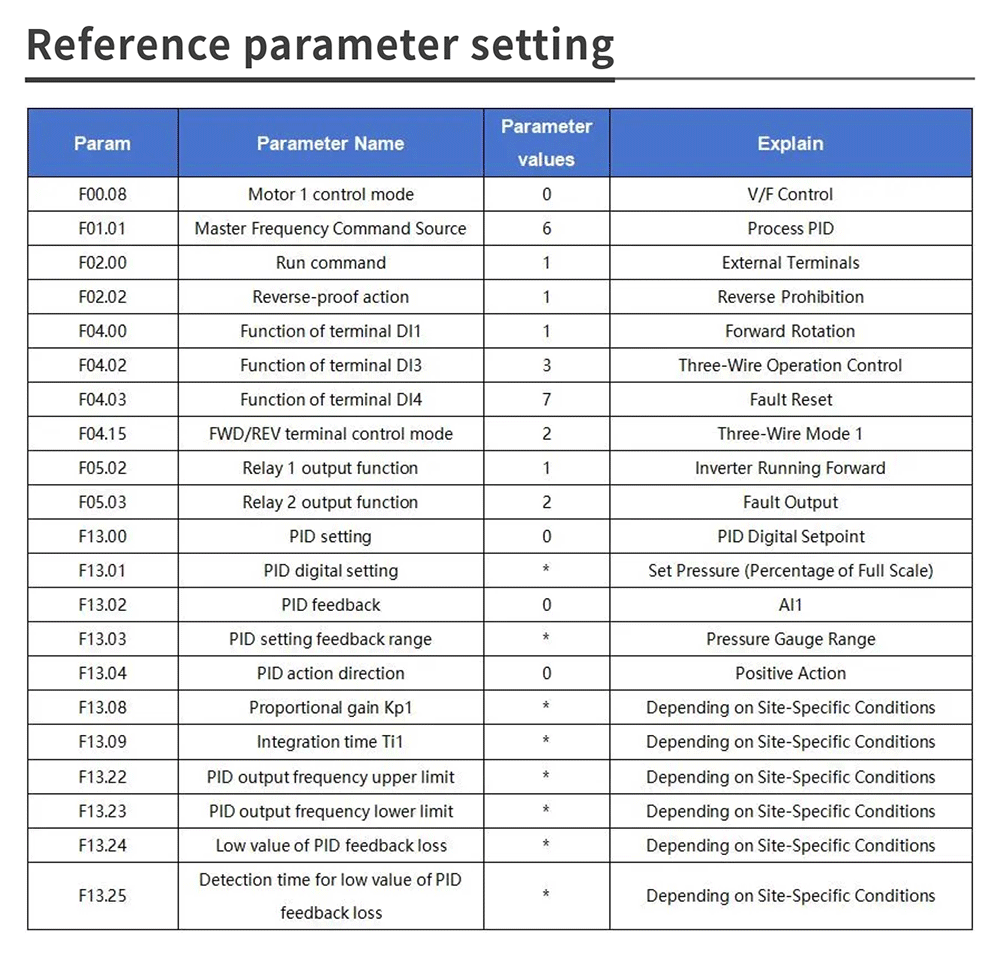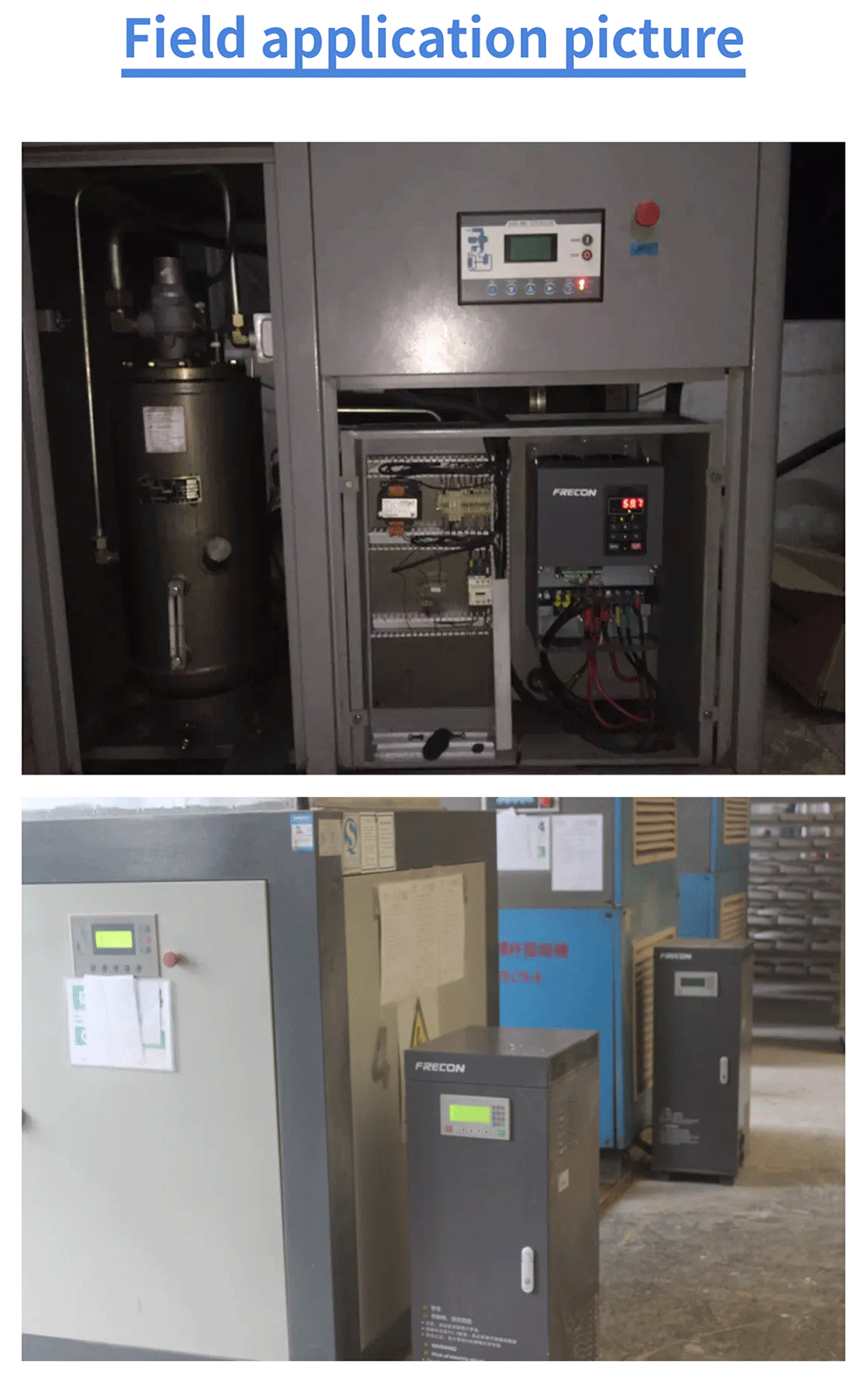An air compressor, which is the main component in a gas source system and classified as general machinery, is used to increase air pressure and generate compressed air. It is a type of driven fluid machine that elevates low-pressure gases to high-pressure gases. Air compressors are widely used across various industries, including industrial production, construction, agriculture, scientific research, and healthcare.
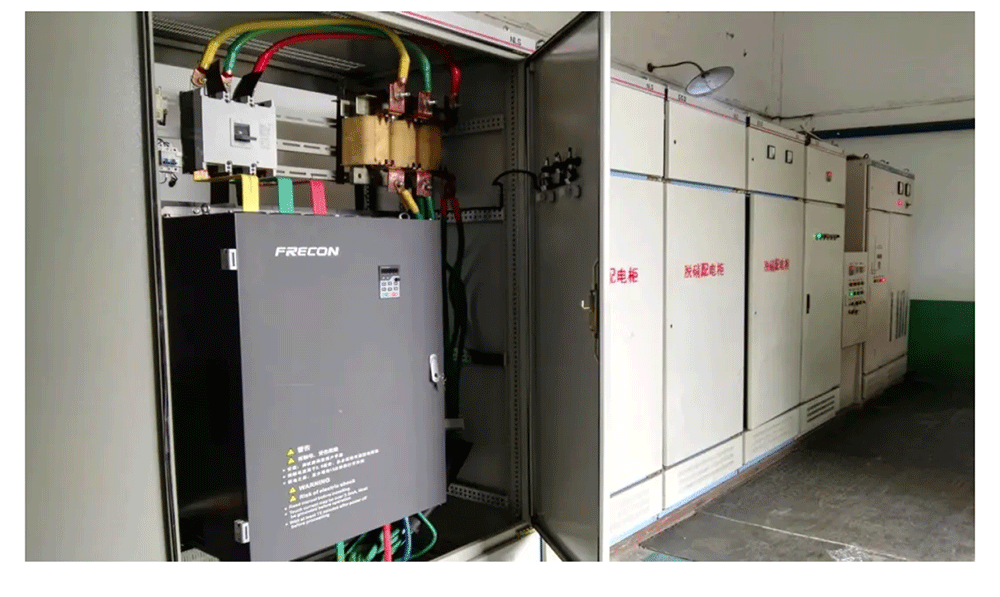

An air compressor is a device that uses mechanical energy to compress low-pressure gas into high-pressure gas. It mainly consists of a compressor, a storage tank, and a control system. The compressor is the core component, which compresses the low-pressure gas into high-pressure gas using mechanisms like rotors or pistons and stores the gas in the storage tank. The control system automates the compressor's operation to ensure stable performance.
During the compression process, air must be drawn into the compressor and treated by it to reach the desired pressure. Without a source of air, the compressor cannot generate high-pressure gas and thus cannot perform its compression work. Additionally, the compressor requires air for cooling. During compression, the temperature rises, and the movement and circulation of air help dissipate heat, protecting the equipment from damage.


Intake Process: When the air compressor starts, the piston or turbine blades begin to move, drawing air into the compressor's cylinder. This process is achieved using a vacuum pump principle, where the movement of the piston or blades creates a negative pressure that pulls external air into the compressor.
Compression Process: Inside the cylinder, the piston or turbine blades compress the incoming air. As the piston or blades continue to move, the volume of the gas decreases while the pressure increases.
Exhaust Process: When the pressure of the gas reaches the desired level, the piston or blades stop moving, and the compressed gas is expelled to the outside.
Cooling Process: To ensure the safe operation of the air compressor, it needs to be cooled. This is typically done using oil cooling or water cooling methods, where part of the gas is routed to a cooling unit to reduce its temperature before being expelled into the atmosphere.
Through these steps, the air compressor converts low-pressure gas into high-pressure gas to meet the needs of various equipment and processes.
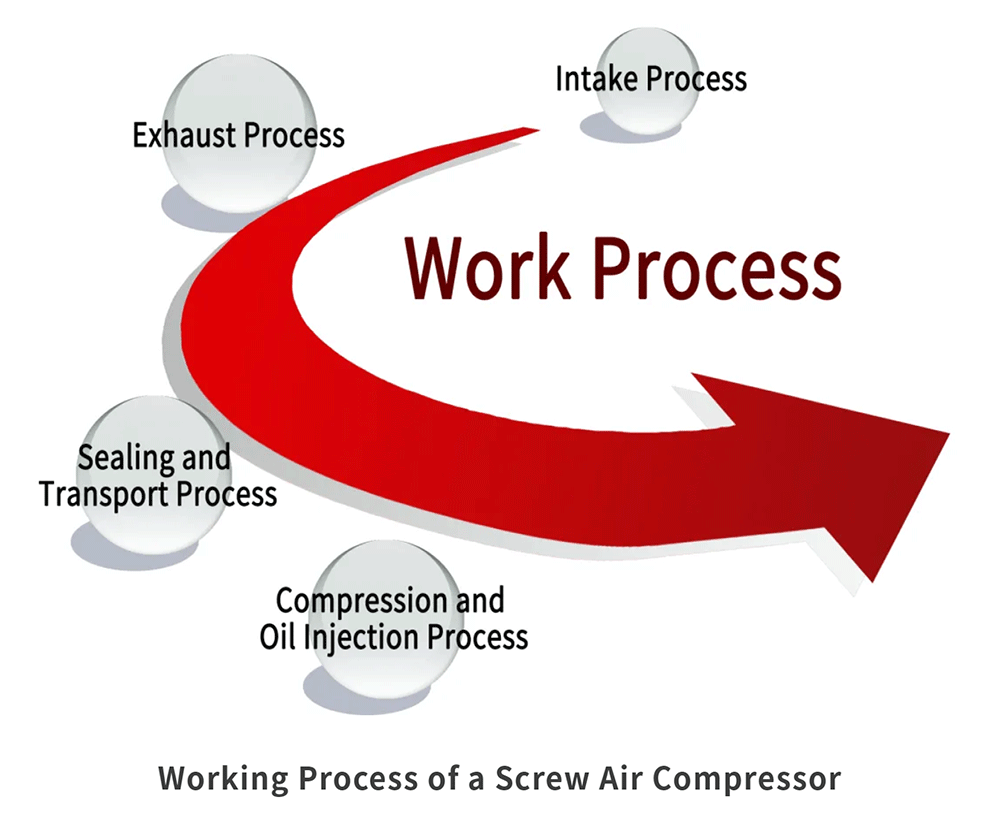

There are many classification methods for air compressors, which can be categorized based on working principles, structural forms, and performance parameters.According to working principles, compressors can be divided into positive displacement compressors and dynamic compressors. Positive displacement compressors operate by compressing the volume of gas within the compressor, which increases the velocity of air molecules within the unit volume, thereby increasing the kinetic energy of the gas. This kinetic energy is then converted into pressure energy to increase the compressed air pressure. Positive displacement compressors are further divided into reciprocating compressors (including piston compressors and diaphragm compressors) and rotary compressors (including screw compressors and vane compressors).Dynamic compressors are widely used in various industrial fields for compressing gases to a high-pressure state. Dynamic compressors are further divided into centrifugal compressors and axial flow compressors.

The piston compressor is a volumetric compressor, with a piston as the compression element moving reciprocally within a cylinder. Its advantages include a simple structural principle, ease of manufacturing, and high efficiency. However, its drawbacks are the high manufacturing difficulty and significant operational impact.
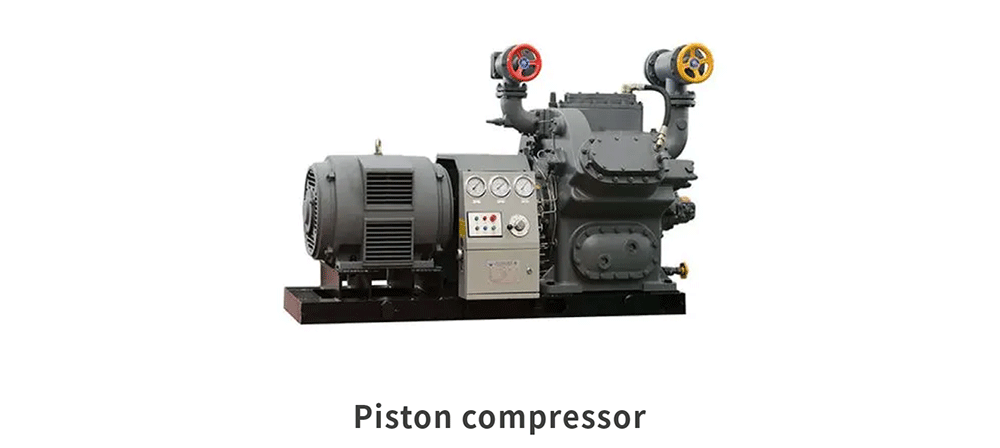
The scroll compressor, also known as a vortex compressor, generates vortex flow through the twisting motion between the rotor and the housing, compressing the gas in the process. The scroll compressor has advantages such as a wide flow range, compact size, and smooth operation, making it suitable for low-pressure and high-flow conditions.
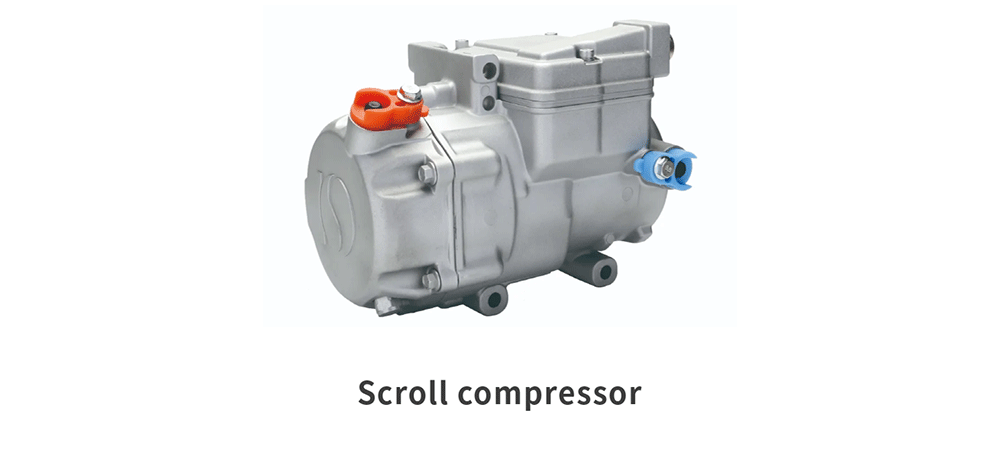
The vane compressor features a simple structure, easy manufacturing, and convenient operation and maintenance. During one rotation, multiple working volumes are connected to the intake and exhaust pipes, resulting in smaller pressure pulsations and eliminating the need for a large storage tank.
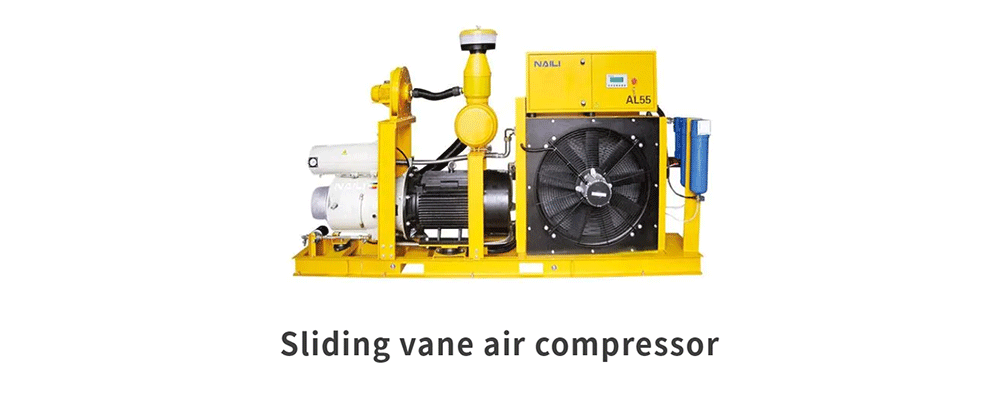
The screw compressor utilizes the meshing of two screws to accomplish gas compression. One screw is called the main screw, while the other is referred to as the driven screw. The rotation of the main screw drives the rotation of the driven screw, gradually compressing the gas through changes in the meshing surface. Screw compressors have advantages such as simple structure, low noise, and minimal vibration, making them commonly used in air compression, refrigeration, and air conditioning applications.
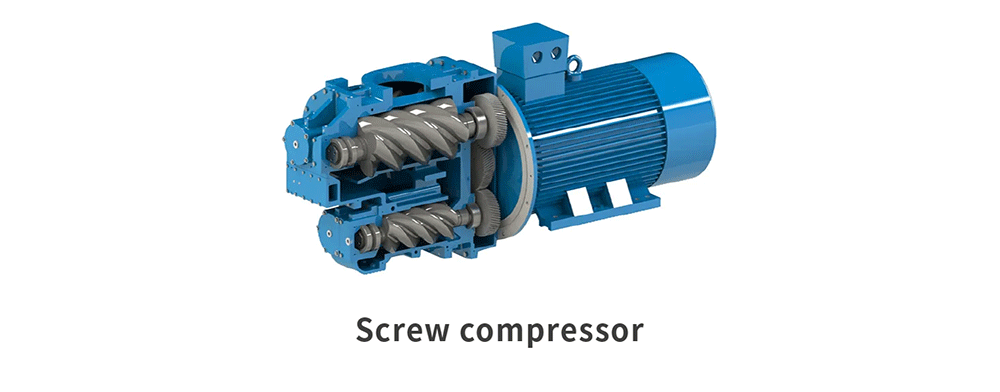

Using the FR500A series inverter to control the air compressor can not only enhance the reliability and lifespan of the equipment but also save a significant amount of electricity. This greatly improves the economic benefits and market competitiveness of the enterprise.
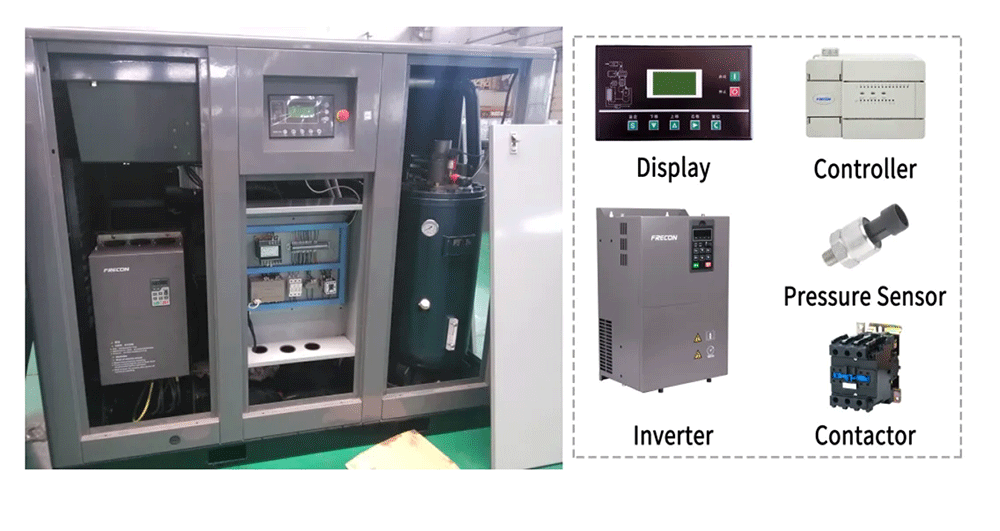

The Inverter can control three-phase asynchronous motors or synchronous motors. It employs pressure closed-loop control for the air compressor to maintain constant air pressure. The open-loop vector control offers an accuracy of ±0.2% and a starting torque of 180% at 0.5 Hz. This enables soft starting of the motor, reducing impact and vibration on the equipment, significantly enhancing its lifespan.
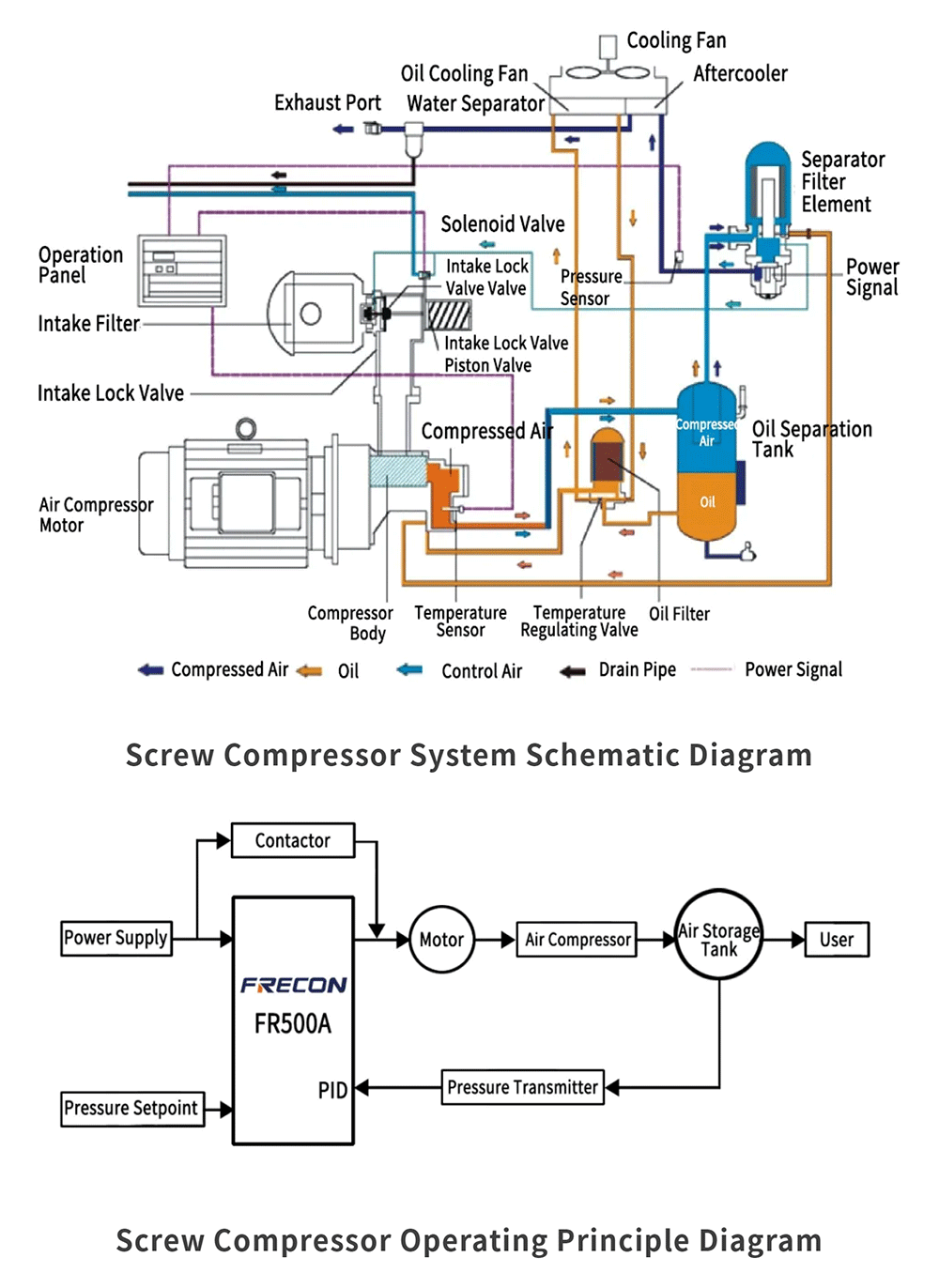

Pressure closed-loop PID control, dual circuits for both standard and frequency conversion, with automatic switching to standard frequency drive in case of Inverter failure, enhancing system redundancy and reliability.
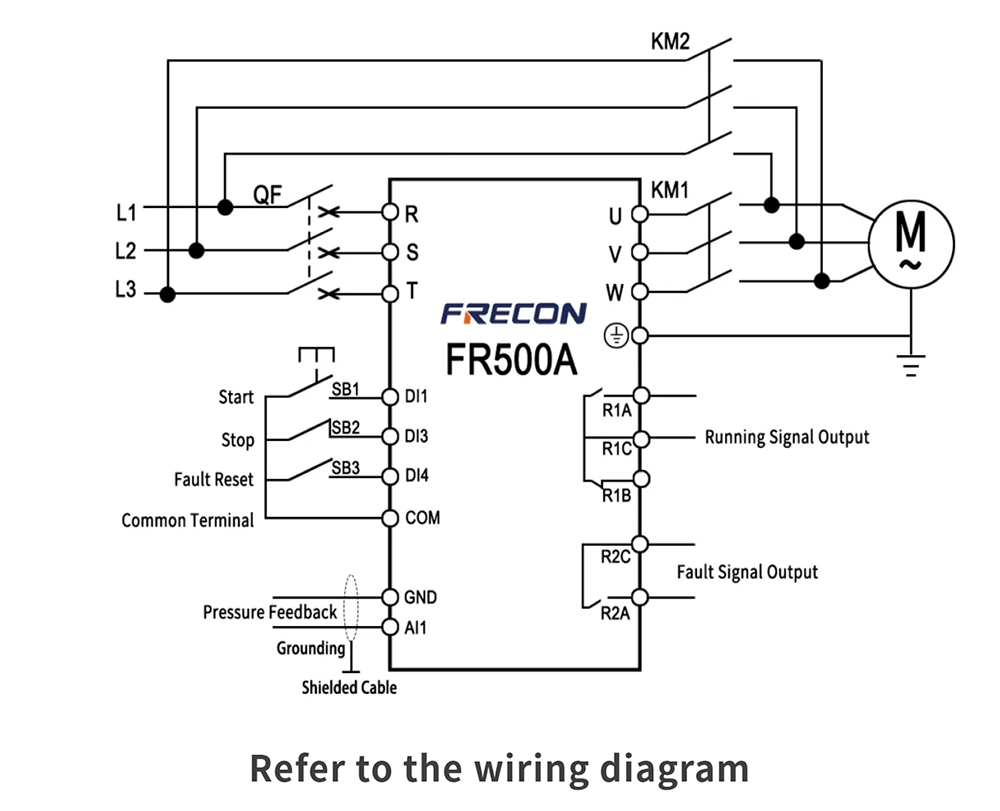
Normal Air Supply Process: Gas demand ↑ → Pipeline pressure ↓ → Difference between set pressure and feedback value ↑ → PID output ↑ → Inverter output frequency ↑ → Air compressor motor speed ↑ → Supply flow rate ↑ → Pipeline pressure tends to stabilize.
When a Inverter Failure Occurs: The relay Y2 of the Inverter closes → Contactor KM1 opens → Contactor KM2
Note: For motors with a power rating of 18.5 kW and above, it is advisable to use star-delta starting for reduced voltage when operating on mains power. The reference diagram provided does not include a star-delta starting circuit.
